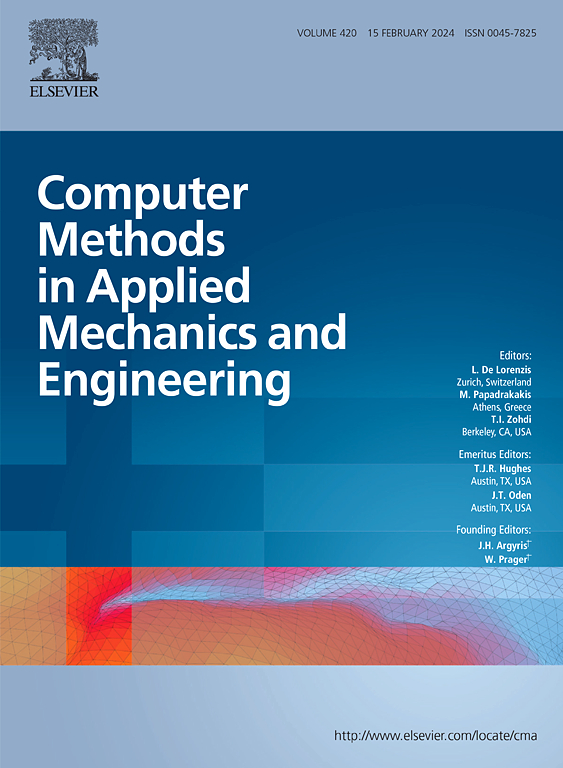Godunov loss functions for modelling of hyperbolic conservation laws
IF 6.9
1区 工程技术
Q1 ENGINEERING, MULTIDISCIPLINARY
Computer Methods in Applied Mechanics and Engineering
Pub Date : 2025-01-29
DOI:10.1016/j.cma.2025.117782
引用次数: 0
Abstract
Machine learning techniques are being used as an alternative to traditional numerical discretization methods for solving hyperbolic partial differential equations (PDEs) relevant to fluid flow. Whilst numerical methods are higher fidelity, they are computationally expensive. Machine learning methods on the other hand are lower fidelity but can provide significant speed-ups. The emergence of physics-informed neural networks (PINNs) in fluid dynamics has allowed scientists to directly use PDEs for evaluating loss functions. The downfall of this approach is that the differential form of systems is invalid at regions of shock inherent in hyperbolic PDEs such as the compressible Euler equations. To circumvent this problem we propose the Godunov loss function: a loss based on the finite volume method (FVM) that crucially incorporates the flux of Godunov-type methods. These Godunov-type methods are also known as approximate Riemann solvers and evaluate intercell fluxes in an entropy-satisfying and non-oscillatory manner, yielding more physically accurate shocks. Our approach leads to superior performance compared to standard PINNs that use regularized PDE-based losses as well as FVM-based losses, as tested on the 2D Riemann problem in the context of time-stepping and super-resolution reconstruction.
求助全文
约1分钟内获得全文
求助全文
来源期刊
CiteScore
12.70
自引率
15.30%
发文量
719
审稿时长
44 days
期刊介绍:
Computer Methods in Applied Mechanics and Engineering stands as a cornerstone in the realm of computational science and engineering. With a history spanning over five decades, the journal has been a key platform for disseminating papers on advanced mathematical modeling and numerical solutions. Interdisciplinary in nature, these contributions encompass mechanics, mathematics, computer science, and various scientific disciplines. The journal welcomes a broad range of computational methods addressing the simulation, analysis, and design of complex physical problems, making it a vital resource for researchers in the field.

 求助内容:
求助内容: 应助结果提醒方式:
应助结果提醒方式:


